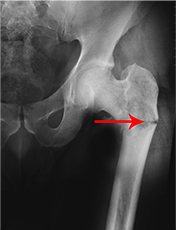
Oefelein MG, Ricchiuti V, Conrad W, Resnick MI (2002) Skeletal fractures negatively correlate with overall survival in men with prostate cancer.

Pathological fracture cancer trial#
Saad F, Gleason DM, Murray R, Tchekmedyian S, Venner P, Lacombe L, Chin JL, Vinholes JJ, Goas JA, Chen B, Zoledronic Acid Prostate Cancer Study G (2002) A randomized, placebo-controlled trial of zoledronic acid in patients with hormone-refractory metastatic prostate carcinoma (in eng). Hagiwara M, Delea TE, Saville MW, Chung K (2013) Healthcare utilization and costs associated with skeletal-related events in prostate cancer patients with bone metastases. Saad F, Gleason DM, Murray R, Tchekmedyian S, Venner P, Lacombe L, Chin JL, Vinholes JJ, Goas JA, Zheng M, Zoledronic Acid Prostate Cancer Study G (2004) Long-term efficacy of zoledronic acid for the prevention of skeletal complications in patients with metastatic hormone-refractory prostate cancer. Logothetis CJ, Lin SH (2005) Osteoblasts in prostate cancer metastasis to bone. Ĭoleman RE (1997) Skeletal complications of malignancy (in eng). Ĭoleman RE (2006) Clinical features of metastatic bone disease and risk of skeletal morbidity. īarry MJ, Simmons LH (2017) Prevention of prostate cancer morbidity and mortality: primary prevention and early detection (in eng). Hamdy FC, Donovan JL, Lane JA, Mason M, Metcalfe C et al (2016) 10-Year outcomes after monitoring, surgery, or radiotherapy for localized prostate cancer. Litwin MS, Tan HJ (2017) The diagnosis and treatment of prostate cancer: a review (in eng). Therefore, a previously undocumented risk factor for pathological fracture in prostate cancer patients is presented. These results indicate that prostate cancer is less effective in inducing bone formation in the cortex than in the marrow and that the decrease in the cortical bone density at the medial trochanter region leads to an increased risk of pathological fracture. Accordingly, histological analysis of the surgical specimens revealed that the affected cortical bone was osteopenic without any apparent new bone formation. Contrarily, the cortical bone density at the medial trochanter region was significantly lower in patients who had pathological fractures in the proximal femur than those who did not. Resultsīone density in the marrow area was increased in all cases with metastases compared with those with no metastases. Surgical specimens of the proximal femur collected from patients who had a pathological fracture were histologically analyzed. The patients were divided into three groups based on the presence or absence of femoral metastatic lesions and pathological fracture.

Materials and methodsĬomputed tomography data of the femur of 62 prostate cancer patients were retrospectively analyzed. The aim of this study is to elucidate the factors that may increase the risk of pathological fracture in patients with prostate cancer metastases in the proximal femur by analyzing computed tomography data. Although the lesions may seem to increase bone strength, pathological fracture occurs in one in four patients with prostate cancer. Prostate cancer often forms osteoblastic lesions that appear as a high-dense shadow upon X-ray.


 0 kommentar(er)
0 kommentar(er)
